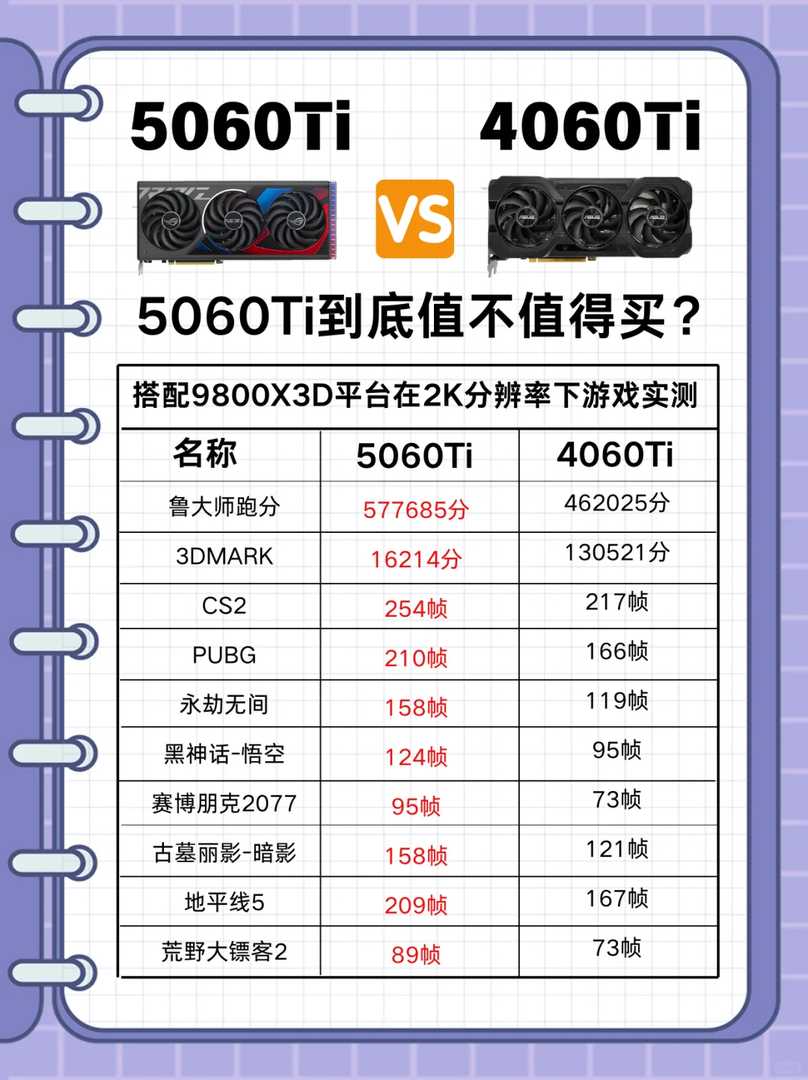🌈 As the entry-level product of the 50 series, the RTX 5060 Ti was officially launched on April 16, 2025, targeting the mainstream market with the goal of delivering high-value 2K ray-tracing gaming experiences to players.

Here are the detailed specifications of this graphics card:
[1] Core Specifications and Performance Improvements
**Architecture and Configuration**
Based on the GB206-300 GPU core, it features 4608 CUDA cores and GDDR7 memory, available in 8GB and 16GB versions. The memory interface is 128-bit with a bandwidth of 448GB/s (a 20%-30% improvement over the previous-gen RTX 4060 Ti).
Boost clock: 2572 MHz, base clock: 2407 MHz, TDP: 180W, supports PCIe 5.0 for optimized data transfer efficiency.
**Performance**
The RTX 5060 Ti excels in ray tracing and neural rendering, supporting DLSS 4, with over 100 games already optimized for the technology.
Delivers smooth performance in most AAA games at 2K resolution, with significant efficiency gains in content creation tasks like video rendering.
[2] Brand Models and Design Features
**Colorful Series**
– **iGame Advanced OC**: Flagship model with triple-fan cooling, black-transparent shell and halo ARGB lighting. Priced at ¥3,699 (8GB) and ¥4,199 (16GB).
– **iGame Ultra W Series**: White hip-hop style, available in dual-fan (ITX-friendly) and triple-fan versions, priced between ¥3,499-¥3,999.
– **Battle-Axe Series**: Budget-friendly option with dual-fan cooling, starting at ¥3,199, balancing cooling and compact size.
**MSI Series**
Includes models like VANGUARD, GAMING, and VENTUS, featuring cooling solutions such as “Storm Fury” fans and metal backplates, with white variants for personalized builds.
[3] Pricing and Market Positioning
**Pricing**: 8GB version at $399 (~¥3,199), 16GB version at $499 (~¥3,699), matching the previous-gen RTX 4060 Ti, offering strong value.
**Market Strategy**: Targets budget-conscious users seeking performance, bridging the gap between the high-end RTX 5070 series and lower-tier models, intensifying competition with AMD rivals.
[4] Considerations for Users
**VRAM Controversy**: The 8GB version may struggle in high-demand scenarios (e.g., 4K gaming) due to limited VRAM. Some media outlets opted not to test this variant, recommending the 16GB model instead.
Comments are closed.